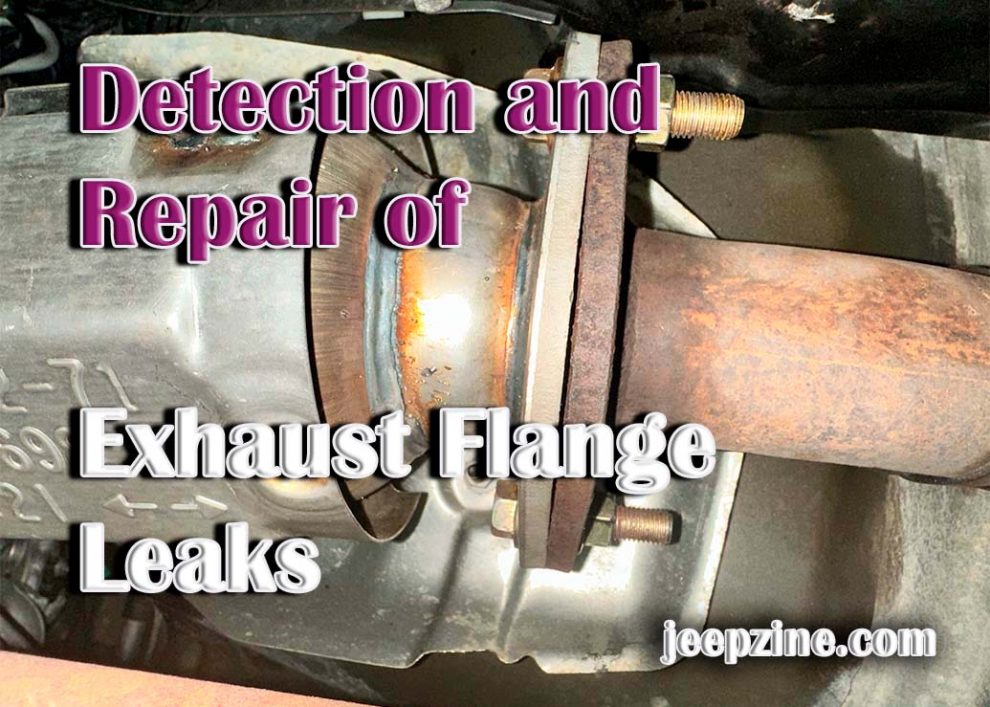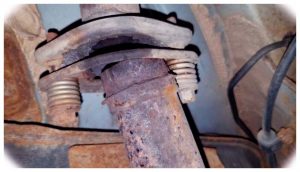The exhaust flange is an essential part of the engine’s exhaust system. It helps attach the exhaust pipe to the vehicle, creating a tight seal to prevent leaks. Unfortunately, a leak in the exhaust flange can be difficult to detect and cause serious damage if untreated. This article will provide an overview of the causes and solutions for detecting and repairing an exhaust flange leak and some tips for preventing future leaks.
What Is an Exhaust Flange Leak?
An exhaust flange leak is when a gap between the pipe and its attaching point (the flange) on your vehicle’s engine system causes gases to escape from your car’s engine instead of exiting through the tailpipe. This type of leak occurs when there is too much wear on metal pieces that form a connection between parts of your vehicle’s exhaust system or when they become corroded due to age or exposure to high temperatures and chemical reactions inside your car’s engine bay. These types of leaks are typically found at joints or bends in your car’s piping system because these areas are more prone to failure from corrosion or vibration than other spots in the system.
Causes of an Exhaust Flange Leak
There are many possible causes for an exhaust flange leak, ranging from age or wear and tear to improper installation. Some common causes include:
-
Worn-out gaskets: Gaskets can wear out over time and cause leaks in the exhaust system.
-
Poorly installed pipes: Improperly installed pipes can cause gaps in the connection due to incorrect positioning of the pipes.
-
Corrosion: Rust or corrosion can weaken joints in the exhaust system, causing them to become disconnected or misaligned, which leads to leaks.
-
Extreme temperatures: High temperatures inside your engine bay can cause metal components of your car’s exhaust system to expand and contract, creating gaps where a tight seal should be present.
How to Detect an Exhaust Flange Leak
Detecting an exhaust flange leak can be difficult since it is often hidden away in the engine bay. However, there are a few telltale signs you can look for to determine if you have a leak:
-
Visible smoke coming from the engine bay: Smoke from an exhaust flange leak is usually light grey or white and may smell of something burning.
-
Unusual noises while driving: You may hear a hissing sound or feel vibration when your car accelerates or idles.
-
A decrease in mileage: If you notice your car’s fuel economy has decreased significantly, it could be due to an exhaust flange leak that’s allowing unburnt gases to escape.
Repairing an Exhaust Flange Leak
If you suspect a leak in your vehicle’s exhaust system, it’s important to have it checked and repaired as soon as possible. Here are some steps for repairing an exhaust flange leak:
-
Inspect the joints and pipes for wear, corrosion, or misalignment.
-
Replace any damaged gaskets with new ones that are specifically designed for your car model and make sure they fit properly.
-
Clean the area around the flange connection thoroughly to remove any dirt or grime that may prevent a proper seal.
-
Use a torque wrench to secure the bolts on the flange and ensure a tight seal.
-
Test drive your car to ensure there are no leakages and everything is working correctly.
Prevention of Future Exhaust Flange Leaks
To prevent future leaks, it’s important to regularly inspect your vehicle’s exhaust system and check for any signs of damage or wear and tear. Additionally, you should replace worn-out gaskets regularly to ensure they form a tight seal and clean the area around the flange connection before reattaching pipes to avoid dirt or grime impeding the connection. Finally, always use an appropriate torque wrench when attaching pipes to secure them tightly in place.
Conclusion
Exhaust flange leaks can be difficult to detect but can cause serious damage if left untreated for too long. To prevent costly repairs down the road, regularly inspect your vehicle’s exhaust system for any signs of wear and tear and clean areas around connections before reattaching pipes. Additionally, use appropriate torque wrenches when attaching pipes and replace worn-out gaskets regularly to ensure a tight seal. With these prevention measures, you can ensure that your exhaust flange leak stays sealed and your car runs smoothly and efficiently.


 Worn-out gaskets: Gaskets can wear out over time and cause leaks in the exhaust system.
Worn-out gaskets: Gaskets can wear out over time and cause leaks in the exhaust system.
Add Comment